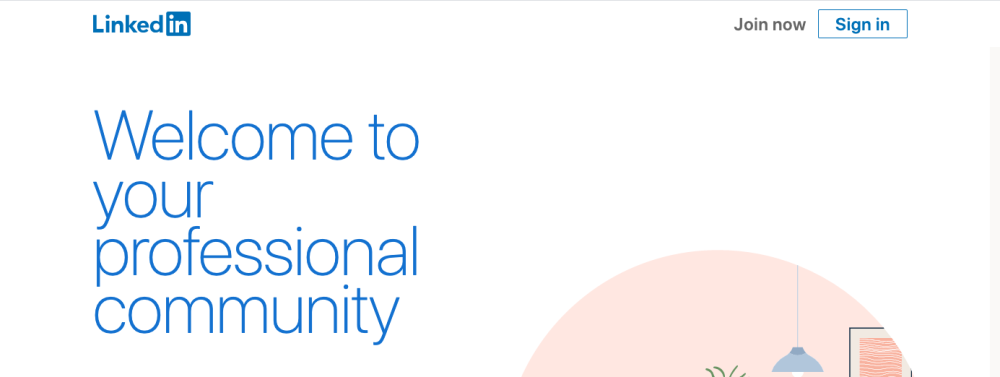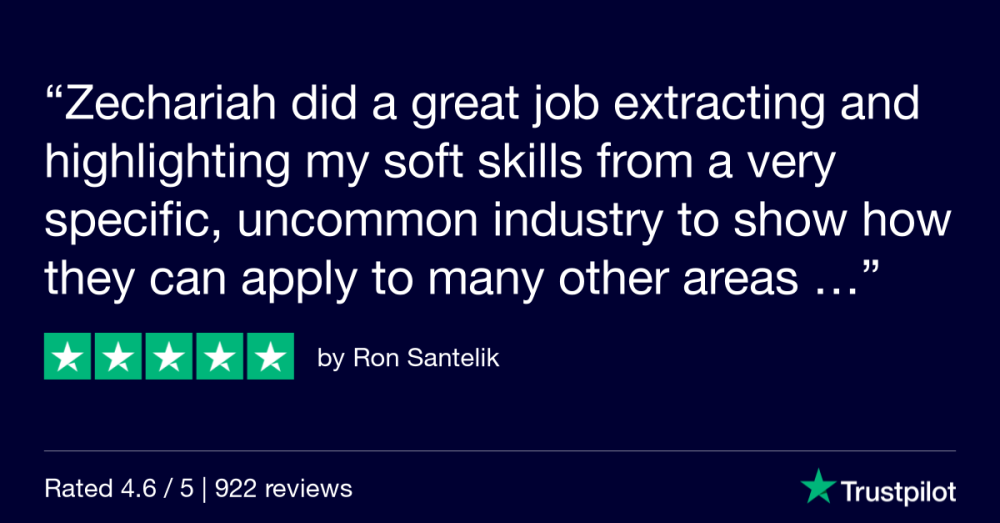How to Network on LinkedIn

LinkedIn is a social media platform that is a great online resource for business networking in today’s world. Many recruiters use LinkedIn to find and source candidates, so having an up-to-date and active profile is key to standing out among competitors.
LinkedIn is a great networking tool and way to connect with decision-makers, executives, and senior leadership in your industry. These connections can take you far if developed in the right way. Online networking is today’s leading form of networking, so knowing how to do it is vital.
While many people think of networking as awkward or disingenuous, there are plenty of ways to make online networking more comfortable. This article describes several examples of how to network naturally on LinkedIn.
Here are the top tips from ZipJob’s team of career experts, LinkedIn writers, and professional resume writers. You can use the list to navigate down to that section of the post.
ZipJob is a premier resume writing service that has been helping job seekers create job-winning resumes since 2016. Our network of 100+ professional resume writers are experts in all industries including IT, Business, and Marketing/Sales.

How to network online: 8 virtual networking ideas
Virtual networking is similar to traditional networking for career development, but there are a few new ways to reach out to contacts. Learning how to network on LinkedIn is fairly simple. You make and maintain a profile, a presence, and your personal brand across the site so others can find you easily.
As the top website for job networking, LinkedIn is the business networking site for all your virtual networking goals. Here are 8 virtual networking ideas to get started.
1. Have an engaging summary
The summary is one of the first things people see when they look at your profile, so having an engaging summary that invites others to connect with you is key. Online networking is all about making a sound impression at first glance, so crafting the perfect LinkedIn profile summary is the first place you want to start. Listing a bit about you, some core competencies, and highlights from your career are a great way to have a solid summary.
Key Takeaway
93% of employers look at a job applicant's LinkedIn profile. Stand out by adding an awesome introduction that is conversational, engaging, and professional.
At ZipJob, we recommend people use a first-person perspective to introduce themselves. Many people use this space as a professional bio as if written by someone else. While that isn’t incorrect, it also isn’t engaging. Close the distance between you and the people viewing your profile with a greeting and some statements about yourself that use “I” or “my.”
2. Participate in LinkedIn groups
Groups are a fun part of LinkedIn where you can find like-minded people to communicate with. Join a few LinkedIn groups you are truly interested in and look around to see how members post and interact. This will help you to know how to engage with others when posting in the group.
Once you have a feel for it, sharing relevant information and connecting with members of the group is one way to build your network. You can try to foster one-on-one conversations on group posts, but invite others to share their experiences as well. Offer information and perspectives that can benefit a large portion of the group members. Save personal comments for direct messages.
3. Respond to posts
A great way to get your profile seen by others is to respond to others’ posts. This will get you seen across the site as posts are often recommended by LinkedIn that have a lot of traffic. Anyone who likes or is connected to the person who posted will see the content too. It could lead to new connections on LinkedIn which expand your network!
When responding to posts on LinkedIn, focus on adding value. Anyone can say “great job,” or “congratulations,” so make a point of adding your own insight, expertise, or experience. Go beyond the basics with your own insight to a topic, or use someone’s update to get back in touch with a former colleague.

4. Have an updated profile
You want your profile to be up-to-date so recruiters and decision-makers have the most accurate information when reading about you. Keep your job titles updated and in alignment with your resume--meaning don’t have information on your LinkedIn that isn’t on your resume. You want your work experience to be succinct and informative, telling the reader important notes about your career. Each job title can include a short summary and a list of any big accomplishments. Think of these as conversation starters that anyone looking at your profile can ask you about. Give yourself an opportunity to brag about your professional achievements!
Another area to keep up-to-date is the career and certifications section. There are many certifications available online and more and more companies are accepting these as forms of education. You want to make sure you update your profile with any of these completed so recruiters and decision-makers know exactly who they are getting when they look at your profile. Consistently learning new skills is highly desirable in job candidates.
5. Have photos
Many people want a face to go with the name. A good quality headshot is all that is needed to have a great profile photo. If you can’t get a professional headshot, a high-quality photo of you will suffice.
An eye-catching LinkedIn cover photo can go a long way. The photo should be professional and representative of who you are in your career. Photos of city skylines, tools used for your trade, or aesthetically pleasing colors are all acceptable cover photos.

The profile picture and background photo are the most common photos on LinkedIn, but there are additional opportunities for some graphics. For example, every position you add to your work experience section can link back to a company profile. This adds logos (and color) to your profile.
You can also share posts that involve images, but proceed with caution. Always keep it professional. The lines between “work” and “home” are blurring, but LinkedIn remains a professional community--treat it differently than your Facebook, Instagram, or dating profile.
6. Have an attention-grabbing headline
The headline shows up when people search for your profile, so you want it to be attention-grabbing and to the point. When building your network, a lot of times you will send a connection and then your profile is the deciding factor to whether the connection is accepted. Having a great headline is another way to make your profile strong and engaging.
Your headline can include your job title, industry, key skills, career accomplishments, and any awards and recognition. Here are some examples: How to Write an Awesome LinkedIn Headline (Examples Included)
7. Add connections you are interested in knowing
When you see a connection you are interested in knowing or connecting with, send a request. Attach a personal note letting them know who you are. If it’s someone you are interested in working with or learning from, asking them for coffee (virtual coffee chats are a thing!) is a great way to open the door for conversation. Send a message to anyone who accepts and thank them for the connection. This is the start of a beautiful networking relationship, so start it off correctly.
Be sure to grow your network strategically. Don’t add everyone you see on LinkedIn; save your requests for the right people you genuinely want to connect with.

8. Send messages
In addition to messaging people when you first connect, send messages to other people in your network. This is where step #7 comes into play: you want your network to be made up of people you actually want to connect with. Once you have spent some time on LinkedIn growing your list of connections, you can selectively message them about something relevant. This might be getting back in touch or catching up; asking a new contact about their line of work, or making an observation about what you’ve seen from them on LinkedIn.
Here are some related posts that can help you reach out to recruiters, old contacts, and other LinkedIn users:
In general, you want to be polite, appropriate, and professional. Don’t ask for a favor (especially from a stranger) without offering something in return.
Networking for introverts
The move to virtual networking is actually great for many introverts who may have difficulty speaking up at in-person networking events. Online, you can think about your words as you type them. If you feel overwhelmed or drained, you can simply log off and recharge.
Essentially, introverts have control over the online networking environment in ways that just aren't possible in real life. Don't be shy: this is your time to shine! You might network your way to a new job that is perfect for an introvert.
How to network for a job
LinkedIn has great searching and filtering features, which means it is pretty easy to find job listings as well as the hiring managers or even the person a new hire will report to. You can look for people who work at one of your target companies. You can find people who work in your industry and join the same professional group they are in. Used correctly, LinkedIn opens up doors for every job seeker.
Unfortunately, asking someone you don’t know for a job via LinkedIn is not a great job search strategy. Asking a bunch of strangers for a job is even worse, as those people might know each other.
Instead, you should use your LinkedIn professional network to grow connections and foster relationships. Then, when you update your profile with that brand new certification you just earned in the exact skill someone is hiring for, your update will show up to a larger pool of people. If you’re using LinkedIn correctly, your name, photo, and headline will bring a positive association to mind.
A more direct route is to connect with people who hire for your general skill set and background. Strike up an actual conversation that is focused on what they need--not what you want. If they are looking to fill a role, send in your resume. If there isn’t a current opportunity, don’t send your resume--it will get ignored. Instead, send a thoughtful job inquiry letter.
Summary
Learning how to network can seem daunting, but with the above tips, you and your profile will be ready to build connections on LinkedIn.
First, you want to make sure you have a strong LinkedIn summary, updated profile, photos, and an engaging headline. The profile is often the deciding factor to whether people accept connection requests, so having it in perfect condition is important.
Next, you want to be active on LinkedIn so others see you. This can mean posting, commenting on others’ posts, or participating in groups. All of these activities get your profile seen, leading to more connection requests and a broader network.
Finally, you want to add connections you are interested in knowing. If you have a mutual friend, see if they will virtually introduce you to a connection you’d like to know better. Asking for a virtual coffee date is a great way to get to know one another in a casual, remote setting.
Virtual networking is different than what most job seekers are used to, but it is the future of networking. LinkedIn is a great resource. Using it to your full advantage is a great way to build your digital network and make a great first impression. You never know where these connections could lead, so nurture them as you would real-life relationships and treat your profile as your personal brand.
LinkedIn offers great networking opportunities, but you have to have a professional LinkedIn presence. Check out our related links or hire a professional LinkedIn profile writer to ensure your LinkedIn has the right work experience, skills, and keywords you need to get noticed.
Recommended posts:

ZipJob is a resume writing service with over 100 professional resume writers ready to help you identify your transferable skills. Check out more ZipJob reviews or compare our three resume writing packages.

